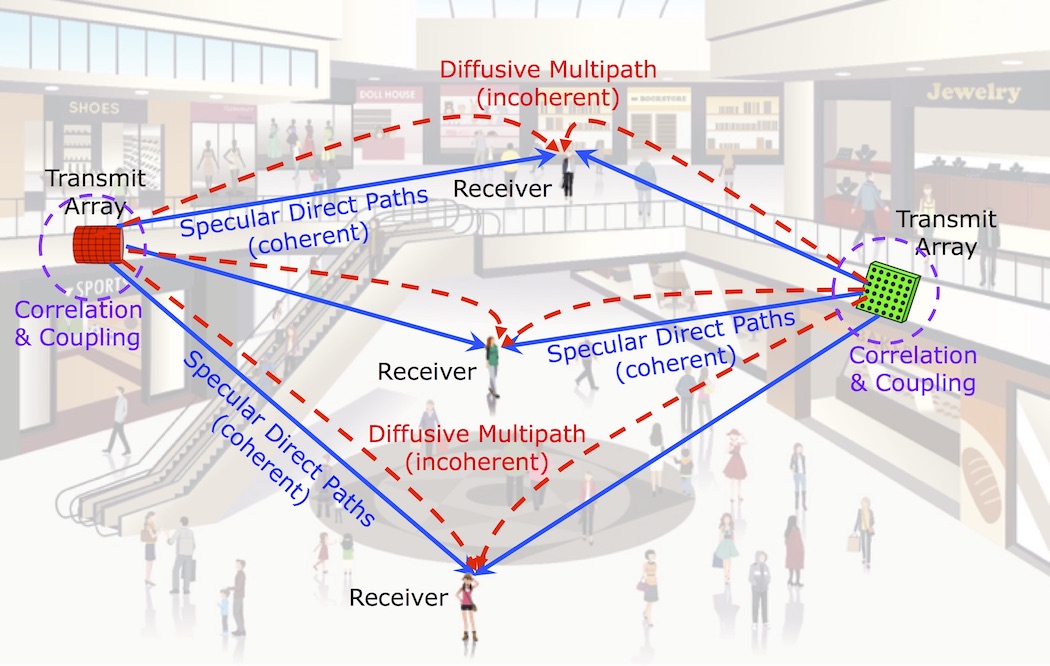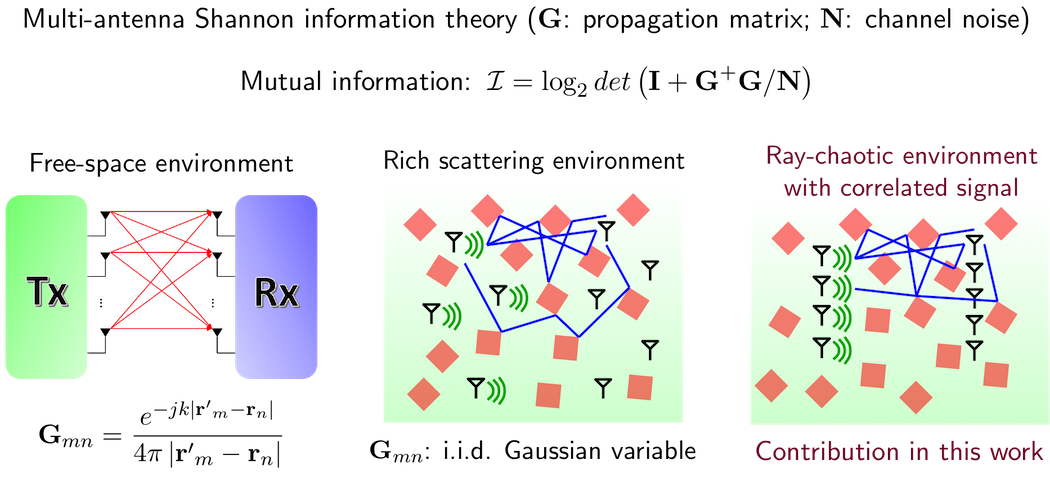Deterministic and Statitical Modeling of Wireless Channel
Wireless communications are expected to take place in increasingly complicated scenarios, such as dense urban, forest, tunnel and other cluttered environments. A key emerging challenge is to understand the physics and characteristics of wave propagation in these environments, which is critical for the analysis, design, and application of advanced mobile and wireless communication systems.
Growing sophistication in wireless communication systems, as well as the increasing demand for network capacity have driven the evolution of propagation models. Taking the cellular network for example, the progression of channel models is summarized in Fig. 1. We notice that rapidly increasing features, higher spatial resolutions, and expended use cases are developed in order to better approximate the real-world propagation scenarios. Namely, the channel models are consistently evolving towards higher fidelity predictions.

Full-wave Field-based Wireless Channel Modeling at the City Scale
We present a full-wave field-based computational methodology for radio wave propagation in complex urban environments. Both transmitting/receiving antennas and propagation environments are modeled by first-principles calculations. System-level, large scene analysis is enabled by scalable, ultra-parallel algorithms on emerging high-performance computing platforms. By simultaneously considering mutual interactions of Tx/Rx antennas, ground stations, and operational environments, this work provides a reliable performance assessment of massive MIMO systems. The advancements are expected to improve the understanding of propagation physics, to predict the wireless channel’s behavior, and to maintain a high level of confidence in next-generation mobile and wireless communication systems. The proposed computational framework is verified and validated with semi-analytical models and representative measurements.


B. MacKie-Mason, Y. Shao, A. Greenwood and Z. Peng, “Supercomputing-Enabled First-Principles Analysis of Radio Wave Propagation in Urban Environments,” in IEEE Transactions on Antennas and Propagation, vol. 66, no. 12, pp. 6606-6617, Dec. 2018.
B. MacKie-Mason, A. Greenwood and Zhen Peng , “Adaptive and Parallel Surface Integral Equation Solvers for Very Large-Scale Electromagnetic Modeling and Simulation (Invited Paper),” Progress In Electromagnetics Research, Vol. 154, 143-162, 2015.
X. -M. Pan, W. -C. Pi, M. -L. Yang, Z. Peng and X. -Q. Sheng, “Solving Problems With Over One Billion Unknowns by the MLFMA,” in IEEE Transactions on Antennas and Propagation, vol. 60, no. 5, pp. 2571-2574, May 2012
H. -W. Gao, Z. Peng and X. -Q. Sheng, “A Geometry-Aware Domain Decomposition Preconditioning for Hybrid Finite Element-Boundary Integral Method,” in IEEE Transactions on Antennas and Propagation, vol. 65, no. 4, pp. 1875-1885, April 2017
Z. Peng and J. -F. Lee, “Non-Conformal Domain Decomposition Method With Mixed True Second Order Transmission Condition for Solving Large Finite Antenna Arrays,” in IEEE Transactions on Antennas and Propagation, vol. 59, no. 5, pp. 1638-1651, May 2011
Electromagnetic Information Theory for Wireless Communication
Electromagnetic field theory provides the fundamental physics of wireless communications. Over the pastdecades, EM theory has played a significant role in the design, performance assessment, and deployment planningof wireless devices and systems. Meanwhile, ever increasing demands for the network capacity in wireless communications have pushed the data rate towards and beyond multi-Gigabits per second (Gbps). Massive distributed arrays, mm-wave bands, network densification, and new waveforms serve as promising and powerfuloptions for achieving these rates. One limiting factor preventing these emerging wireless systemsfrom realizing their full potential is our understanding of the physical layer. Specifically, our ability to faithfully model the physics of wireless signal propagation channels in diverse and complex environments.
The objective of this research is to investigate electromagnetic information theory for wireless communication through complicated diffuse mulitpath environments. Applications include indoor radio channels, dense urban cells, transmission through diffusive random media and disordered media, etc. The objective is attained by cutting across traditional disciplinary boundaries between electromagnetic theory, wave chaos physics, random statistical analysis and information theory. The methodology is to first establish fundamental statistical representations of diffuse multipath media, then integrate component-specificfeatures of transmitters and receivers, and finally encode the governing physics into the mathematical information theory.

